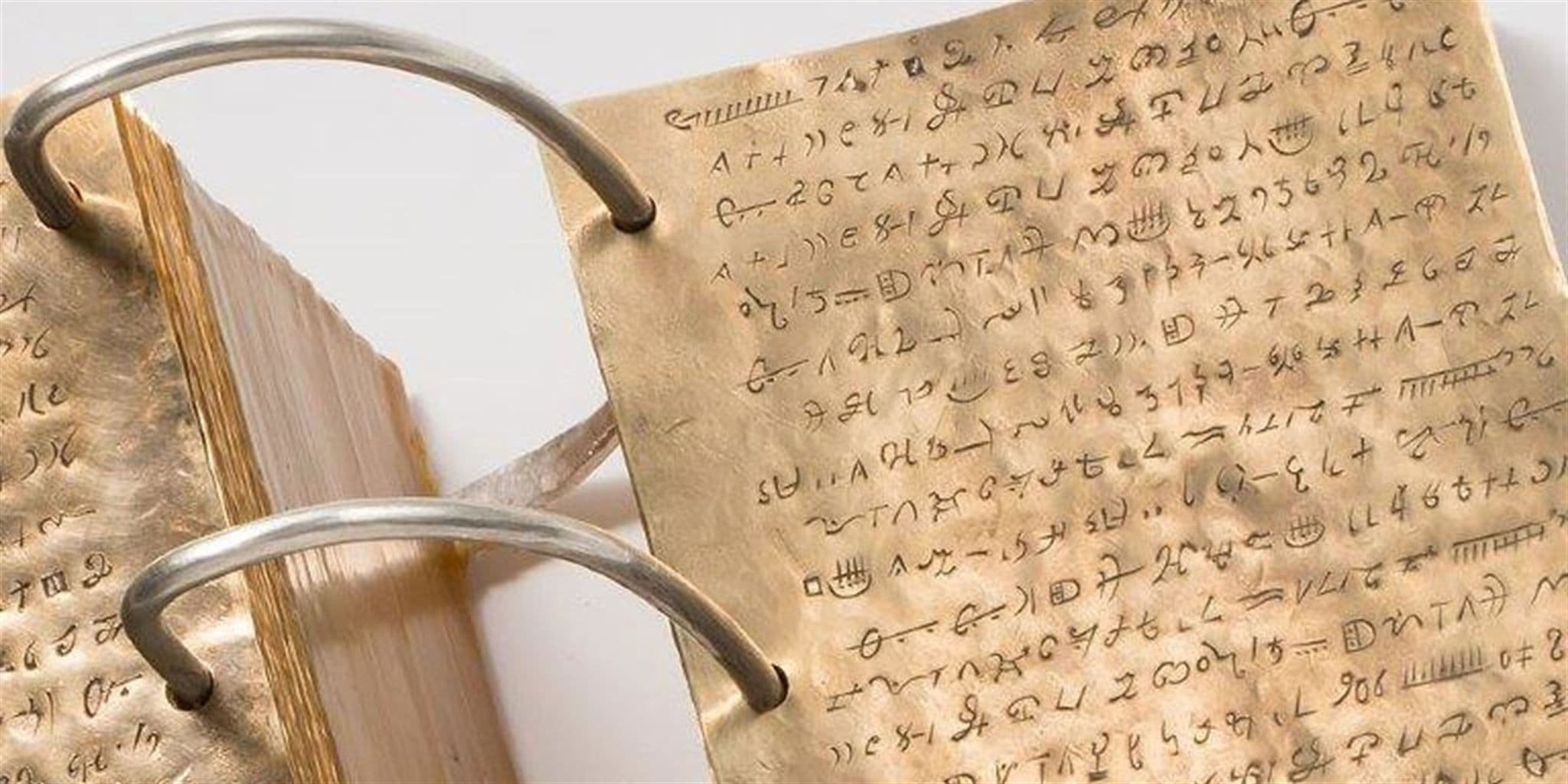Evidence #278 | December 6, 2021
Book of Mormon Evidence: Compact Egyptian Script
Post contributed by
Scripture Central

Abstract
Moroni’s observation that Hebrew would have required a larger set of plates than reformed Egyptian is consistent with what we know about Hebrew and Egyptian scripts.Near the end of the Book of Mormon, Moroni shared a brief technical note about the Nephite record:
And now, behold, we have written this record according to our knowledge, in the characters which are called among us the reformed Egyptian, being handed down and altered by us, according to our manner of Speech. And if our plates had been sufficiently large we should have written in Hebrew; but the Hebrew hath been altered by us also; and if we could have written in Hebrew, behold, ye would have had no imperfection in our record (Mormon 9:32–33).
From this statement, we can gather that while a Hebrew script would have offered more clarity, it also took up more space on the plates. The Egyptian script familiar to the Nephites was apparently more compact, either in its actual physical form or in its communication of ideas, or perhaps both. Moroni’s editorial comment, which appears almost as an aside, is an accurate observation about the nature of Hebrew and later Egyptian scripts.
Hebrew and Egyptian Scripts
As a script, ancient Hebrew was alphabetic. Words were spelled out letter by letter to express sound and meaning (yet only consonants, and not vowels, were written).1 In contrast, Egyptian characters could express not only alphabetic signs, but also logographic information (a word, phrase, or idea represented by a single character or symbol).2
Over time, shortened forms of Egyptian script such as Hieratic and Demotic developed. Egyptologist James Hotch describes Demotic Egyptian, a form known in the ancient Near East at the time of Lehi, as being a “much abbreviated” from Hieratic.3 According to Janet Johnson, Demotic was “an abbreviated development of hieratic,”4 and James Allen characterizes Demotic as “more cursive and abbreviated” than earlier Egyptian writing.5
Shortened forms of Egyptian, however, created additional complexities for the reader. Egyptologist Joachim Friederich Quack notes that “cursive [Egyptian] writing makes it more difficult to recognize the signs.”6 It is “normally considered to be a highly difficult, almost unreadable script. Even within Egyptology, it is a niche for the happy few.”7
Conclusion
Moroni’s observation about the imperfections of a compact Egyptian script, and, in comparison, the greater clarity of Hebrew, is consistent with what is now known about these ancient languages. Joseph Smith did not begin his study of Hebrew until 1835, and the study of Egyptian languages was in its infancy at the time the Book of Mormon was published. The accurate linguistic understanding presented in Mormon 9:32–33 therefore seems likely to have been beyond Joseph Smith’s knowledge in 1829, when he translated the Book of Mormon.
Book of Mormon Central, “Why Did Mormon and Moroni Write in Reformed Egyptian? (Mormon 9:32),” KnoWhy 513 (May 2, 2019).
William J. Hamblin, “Reformed Egyptian,” FARMS Review 19, no. 1 (2007): 31–35.
John Gee, “Epigraphic Considerations on Janne Sjodahl’s Experiment with Nephite Writing,” Journal of Book of Mormon Studies 10, no. 1 (2001): 25, 79.
John A. Tvedtnes, “Reformed Egyptian,” in The Most Correct Book: Insights from a Book of Mormon Scholar (Salt Lake City, UT; Cornerstone Publishing, 1999), 22–24.
John Gee, “Two Notes on Egyptian Script,” Journal of Book of Mormon Studies 5, no. 1 (1996): 162–176.
- 1. Thomas O. Lambdin, Introduction to Biblical Hebrew (New York, NY: Scribner’s, 1971), xxi–xxii.
- 2. Alan Gardiner, Egyptian Grammar, 3rd ed. (Oxford: Griffith Institute, 1957), §6; James E. Hoch, Middle Egyptian Grammar, SSEA Publication XV (Mississauga: Benben Publications, 1997), §4.
- 3. Hoch, Middle Egyptian Grammar, §4.
- 4. Janet H. Johnson, Thus Wrote ˁOnchsheshonqy: An Introductory Grammar of Demotic, 3rd ed. (Chicago, IL: Oriental Institute, 2000), §§3–4.
- 5. James P. Allen, Middle Egyptian: An Introduction to the Language and Culture of Hieroglyphs, 3rd ed. (Cambridge: Cambridge University Press, 2014), §1.10.
- 6. Joachim Friederich Quack, “Difficult Hieroglyphs and Unreadable Demotic? How the Ancient Egyptians Dealt with the Complexities of Their Script,” in The Idea of Writing: Play and Complexity, ed. Alex de Voogt and Irving Finkel (Leiden: Brill, 2010). 239.
- 7. Quack, “Difficult Hieroglyphs and Unreadable Demotic?” 244.